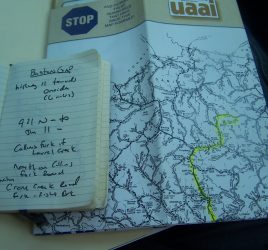A Life in Longitude: The Myths of Appalachian Poverty
“In fact, the violence that brought turn-of-the-century Clay County national notoriety as a land of feudists was a conflict between two families of highly educated, wealthy elites and their supporters.” — The Road to Poverty: The Making of Wealth and Hardship in Appalachia, by Dwight B. Billings and Kathleen M. Blee
Apparently I live in the middle of longitudinal studies. This crossed my mind while I was reading about Clay County last night. The two touch points:
- I’m currently a professor at Ball State University in Muncie, Indiana, which is home to the Middletown Studies and used the town at representative of “middle America.”
- Clay County (and in particular the feud) was the centerpiece of a longitudinal study that became the book The Road to Poverty. Clay County was chosen as it represents “middle Appalachia” and thus becomes an explanatory system to debunk many of the stereotypes of the region.
Much of the introduction in The Road deals with the idea of viewing Appalachia as an entity unto itself, as if it exists in America but can’t be understood through the lens of the capitalist system. (This doesn’t mean, by the way, that you’re about to read a Marxist interpretation of the country!)
The study delves deeply into the politics and economics of the region, the state, and the country to explain how systemic forces began intertwined with local politics to create the perfect economic storm, one that has left Clay County (and several surrounding areas) as the most economically and educationally depressed.
It challenges the notion that the people who settled the region were somehow savages or uneducated, and instead examines Appalachia for what it is: a part of the American whole.
* * *
If you like what you’ve read, and would like to support my project, please feel free to visit my Kickstarter page (and pass this along to any friends who you think might find this interesting).



